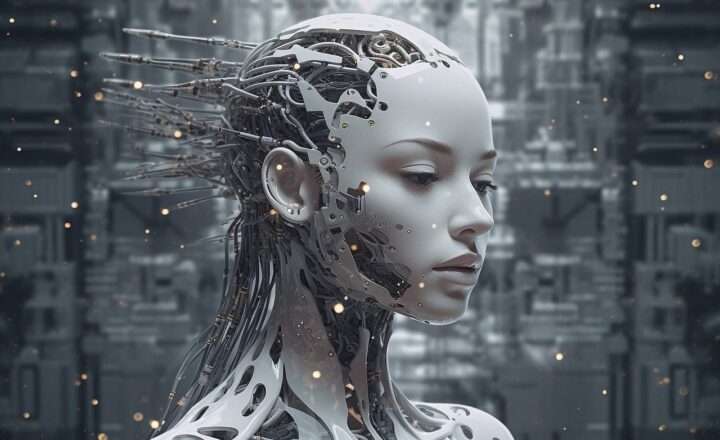Understanding Deep Learning: The Technology Powering the Most Advanced AIs
November 11, 2024

Deep learning, a subset of machine learning, has taken the world by storm in recent years. It plays a critical role in powering some of the most advanced artificial intelligence (AI) systems today. From voice assistants like Siri and Alexa to self-driving cars and advanced image recognition systems, deep learning is revolutionizing how we interact with technology.
1. What is Deep Learning?
Deep learning is inspired by the structure and function of the brain, employing algorithms known as artificial neural networks. These networks consist of layers of nodes (or neurons) that process data; as the data passes through these layers, each node extracts specific features or elements related to the input. This hierarchical learning allows deep learning models to handle vast amounts of data and learn to recognize complex patterns.
Unlike traditional machine learning techniques, deep learning does not require explicit feature extraction. Instead, it automatically discovers the features necessary for classification or prediction from raw data.
Some key characteristics of deep learning include:
- Multi-layered structure: Deep learning models consist of multiple layers of neurons. The data flows through these layers, and the model learns progressively more abstract features at each layer.
- Large data requirement: These models are most effective when trained on large datasets, which allow them to generalize better to new data.
- High computational power: Training deep learning models requires significant computational resources due to their complexity and the volume of data they handle.
2. The Anatomy of a Neural Network
To better understand how deep learning works, we should look into its building blocks, specifically artificial neural networks (ANNs).
The basic structure of an ANN consists of three types of layers:
- Input Layer: This is where the data is entered. Each node represents a feature of the data. For instance, in an image classification task, each pixel might serve as an individual feature in the input layer.
- Hidden Layers: These layers perform the bulk of the processing through weighted connections between neurons. Each neuron in a hidden layer receives input from the previous layer, applies a transformation, and passes the output to the next layer, allowing the model to learn complex relationships. The number of hidden layers can vary, but deeper networks generally perform better on intricate tasks.
- Output Layer: This layer delivers the final prediction or classification. For example, in a binary classification task, the output layer might have one neuron representing the probability of a certain class.
Each connection between the neurons has a weight that is adjusted during the training process, allowing the model to learn from the data. Activation functions, such as ReLU or Sigmoid, help determine the output of each neuron based on its input.
3. How Does Deep Learning Actually Work?
Deep learning models undergo a training process that involves multiple steps:
1. Data Collection: The first step is to gather an ample dataset relevant to the task at hand. This dataset should be large enough to enable the model to learn various features of the input data effectively.
2. Data Preprocessing: This involves cleaning the data, handling missing values, normalizing, and transforming the input for better model performance. Data augmentation techniques are often employed in image classification to create variations of existing images, increasing the size and diversity of the dataset.
3. Training the Model: The prepared dataset is divided into training and validation sets. The model is initialized with random weights, and as it processes the training data, it attempts to minimize the difference between its predictions and the actual outcomes using optimization algorithms like stochastic gradient descent.
4. Evaluation: After training, the model is tested on a separate validation dataset to evaluate its performance. Metrics such as accuracy, precision, and recall help determine if the model is performing well.
5. Fine-Tuning: If the model performs poorly, adjustments can be made in terms of model architecture, learning rates, layer configurations, and hyperparameters to improve accuracy.
6. Deployment: Once the model is fine-tuned and performs satisfactorily, it’s deployed into production for real-world applications.
4. Applications of Deep Learning
Deep learning is a powerful tool with various applications across multiple domains. Some notable areas include:
- Image Recognition: Deep learning models are widely used in image classification tasks, such as facial recognition, object detection, and medical image analysis.
- Natural Language Processing (NLP): AI-powered chatbots, machine translation, and sentiment analysis rely on deep learning techniques to understand and generate human language.
- Self-Driving Cars: Deep learning allows autonomous vehicles to interpret sensory data, recognize objects, and make real-time driving decisions, increasing safety and efficiency.
- Healthcare Diagnostics: Deep learning aids in the diagnosis of diseases from medical imagery, predicting patient outcomes, and personalizing treatment plans.
- Finance: Algorithms employing deep learning can predict stock prices, detect fraud, and analyze risk, significantly transforming how financial institutions manage data.
Each application showcases the power of deep learning to handle complex problems and provide solutions that were previously impossible with traditional programming techniques.
5. The Future of Deep Learning
Looking ahead, deep learning is poised for even more advancements. The technology is evolving rapidly, driven by several factors:
- Better Data Availability: As the digital world expands, vast amounts of data are created daily. This provides ample opportunities for training deep learning models and fostering innovation.
- Advanced Algorithms: Ongoing research is focused on improving existing algorithms and developing new ones, enhancing the speed and efficiency of deep learning models.
- More Powerful Hardware: The development of specialized hardware, including GPUs and TPUs, increases the computational power available for training large deep learning models, reducing time and costs.
- Interdisciplinary Integration: Deep learning is increasingly intersecting with fields like neuroscience, psychology, and cognitive science, providing richer insights and new paradigms for developing AI systems.
As we move forward, deep learning will undoubtedly continue to shape our world, making advances in technology and enhancing our daily lives.
Conclusion
Deep learning stands at the forefront of AI advancements, enabling machines to learn from vast data sources and perform tasks previously thought to be the exclusive domain of humans. Its ability to automatically discover patterns and relationships fosters innovation and drives efficiency across multiple industries. As the field progresses, deep learning will unlock new possibilities and redefine what is feasible with technology. By harnessing the power of deep learning, we can look forward to a future rich with smarter, more capable AI systems that revolutionize the way we live and work.






